1mg
Showing 4701–4750 of 7910 results
-

Gypsogenin
$98.33 Add to cart View Product DetailsMolecular Formula : C30H46O4
-
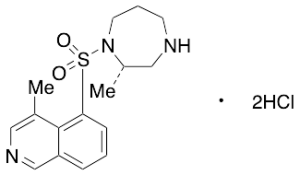
H-1152 Dihydrochloride
$112.99 Add to cart View Product DetailsMolecular Formula : C16 H21 N3 O2 S . 2 Cl H
-

H-1152 Glycyl Dihydrochloride
$160.43 Add to cart View Product DetailsMolecular Formula : C18 H24 N4 O3 S . 2 Cl H
-
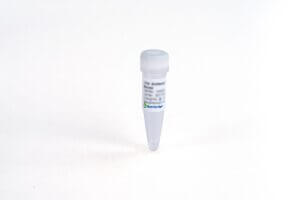
h-FABP (27C1C), mAb, Mouse
$137.14 Add to cart View Product DetailsHeart-type fatty acid binding protein (H-FABP) is encoded by the FABP3 gene with a low molecular weight of 15 kDa. It is released in large quantities into blood at an early stage of acute myocardial infarction (AMI). H-FABP is a serum marker with high sensitivity and specificity for diagnosing AMI and myocardial ischemia.
-

h-FABP (28D1E), mAb, Mouse
$137.14 Add to cart View Product DetailsHeart-type fatty acid binding protein (H-FABP) is encoded by the FABP3 gene with a low molecular weight of 15 kDa. It is released in large quantities into blood at an early stage of acute myocardial infarction (AMI). H-FABP is a serum marker with high sensitivity and specificity for diagnosing AMI and myocardial ischemia.
-

h-FABP (HC29)
$137.14 Add to cart View Product DetailsHeart-type fatty acid binding protein (H-FABP) is encoded by the FABP3 gene with a low molecular weight of 15 kDa. It is released in large quantities into blood at an early stage of acute myocardial infarction (AMI). H-FABP is a serum marker with high sensitivity and specificity for diagnosing AMI and myocardial ischemia.
-

Halofuginone Hydrobromide
$180.26 Add to cart View Product DetailsMolecular Formula : C16 H17 Br Cl N3 O3 . Br H
-

Halofuginone Hydrochloride
$250.99 Add to cart View Product DetailsMolecular Formula : C16 H17 Br Cl N3 O3 . Cl H
-

Hamamelitannin
$81.08 Add to cart View Product DetailsMolecular Formula : C20 H20 O14
-
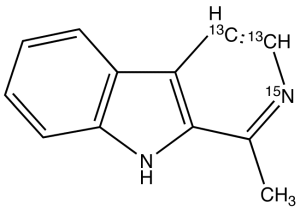
Harman-13C2,15N
$215.63 Add to cart View Product DetailsMolecular Formula : C1013C2H10N15N
-
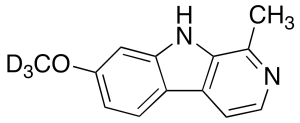
Harmine-d3
$227.70 Add to cart View Product DetailsMolecular Formula : C13H9D3N2O
-
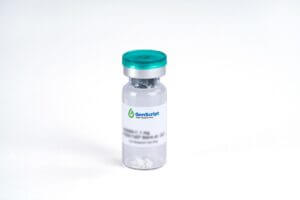
HB-EGF, Human
$737.44 Add to cart View Product DetailsProheparin-binding EGF-like growth factor (HB-EGF), also known as DTR, DTS and HEGFL, is a member of the EGF family of mitogens. It is expressed in macrophages, monocytes, endothelial cells and muscle cells. HB-EGF signals through the EGF receptor to stimulate the proliferation of smooth muscle cells, epithelial cells and keratinocytes. Compared to EGF, HB-EGF binds to the EGF receptor with a higher affinity and has been shown to bemore mitogenic, likely due to its ability to bind to heparin and heparin sulfate proteoglycans. HB-EGF has also been reported to act as a diphtheria toxin receptor, mediating endocytosis of the bound toxin. Heparin-binding EGF-like growth factor has been shown to interact with NRD1, Zinc finger and BTB domain-containing protein 16 and BAG1.
-

HB-EGF, Human
$737.44 Add to cart View Product DetailsProheparin-binding EGF-like growth factor (HB-EGF), also known as DTR, DTS and HEGFL, is a member of the EGF family of mitogens. It is expressed in macrophages, monocytes, endothelial cells and muscle cells. HB-EGF signals through the EGF receptor to stimulate the proliferation of smooth muscle cells, epithelial cells and keratinocytes. Compared to EGF, HB-EGF binds to the EGF receptor with a higher affinity and has been shown to bemore mitogenic, likely due to its ability to bind to heparin and heparin sulfate proteoglycans. HB-EGF has also been reported to act as a diphtheria toxin receptor, mediating endocytosis of the bound toxin. Heparin-binding EGF-like growth factor has been shown to interact with NRD1, Zinc finger and BTB domain-containing protein 16 and BAG1.
-

HB-EGF, Human
$1,030.69 Add to cart View Product DetailsProheparin-binding EGF-like growth factor (HB-EGF), also known as DTR, DTS and HEGFL, is a member of the EGF family of mitogens. It is expressed in macrophages, monocytes, endothelial cells and muscle cells. HB-EGF signals through the EGF receptor to stimulate the proliferation of smooth muscle cells, epithelial cells and keratinocytes. Compared to EGF, HB-EGF binds to the EGF receptor with a higher affinity and has been shown to bemore mitogenic, likely due to its ability to bind to heparin and heparin sulfate proteoglycans. HB-EGF has also been reported to act as a diphtheria toxin receptor, mediating endocytosis of the bound toxin. Heparin-binding EGF-like growth factor has been shown to interact with NRD1, Zinc finger and BTB domain-containing protein 16 and BAG1.
-

HB-EGF, Mouse
$1,035.00 Add to cart View Product DetailsHeparin-binding EGF-like growth factor (HB-EGF) is a member of the EGF family of proteins. HB-EGF-like growth factor is synthesized as a membrane-anchored mitogenic and chemotactic glycoprotein. An epidermal growth factor produced by monocytes and macrophages, due to an affinity for heparin is termed HB-EGF. It has been shown to play a role in wound healing, cardiac hypertrophy and heart development and function. The transmembrane form of HB-EGF is the unique receptor for diptheria toxin and functions in juxtacrine signaling in cells. Both forms of HB-EGF participate in normal physiological processes and in pathological processes including tumor progression and metastasis, organ hyperplasia, and atherosclerotic disease. HB-EGF can bind two locations on cell surfaces, heparan sulfate proteoglycans and EGF-receptor effecting cell to cell interactions.
-

HbA1c (4G1), mAb, Mouse
$78.49 Add to cart View Product DetailsGlycated hemoglobin (HbA1c) is formed by hemoglobin’s exposure to plasma glucose in a non-enzymatic process. As the average amount of plasma glucose increases, the fraction of HbA1c scales up. HbA1c reflects average plasma glucose over the previous eight to twelve weeks and it can be used as a marker to measure long-term blood glucose levels. HbA1c test is routinely performed in people with type 1 and type 2 diabetes to evaluate how well diabetes is controlled. The normal range for HbA1c level is less than 6%.
-

HCG (46H8), mAb, Mouse
$215.63 Add to cart View Product DetailsHuman chorionic gonadotropin (HCG) is a polypeptide hormone produced by the human placenta. HCG is a heterodimer, composed of an alpha and a beta subunit. The level of HCG is elevated in the serum of pregnant women. It is a useful marker for diagnosis of pregnancy.
-

HCG (5A8), mAb, Mouse
$73.87 Add to cart View Product DetailsHuman chorionic gonadotropin (HCG) is a polypeptide hormone produced by the human placenta. HCG is a heterodimer, composed of an alpha and a beta subunit. The level of HCG is elevated in the serum of pregnant women. It is a useful marker for diagnosis of pregnancy.
-
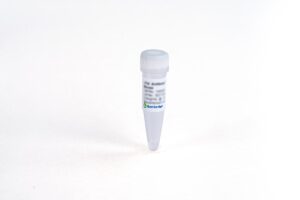
HCG (5B8), mAb, Mouse
$72.42 Add to cart View Product DetailsHuman chorionic gonadotropin (HCG) is a polypeptide hormone produced by the human placenta. HCG is a heterodimer, composed of an alpha and a beta subunit. The level of HCG is elevated in the serum of pregnant women. It is a useful marker for diagnosis of pregnancy.
-

HCV Antibody (29D), mAb, Mouse
$398.48 Add to cart View Product DetailsHepatitis
C virus (HCV) is a one kind of single-stranded RNA virus. It can causes liver
damage. The HCV capsid is formed by polymerization of the HCV Core Antigen (HCV
Ag). It was reported that HCV Ag could be used to diagnose active HCV infection. -

HCV Antibody (45F4), human chimeric Antibody
$398.48 Add to cart View Product DetailsHepatitis
C virus (HCV) is a one kind of single-stranded RNA virus. It can causes liver
damage. The HCV capsid is formed by polymerization of the HCV Core Antigen (HCV
Ag). It was reported that HCV Ag could be used to diagnose active HCV infection. -

Heat Stable FGF-basic, Human
$2,173.50 Add to cart View Product DetailsHeat Stable FGF-basic, Human is a pleiotropic cytokine and one of the prototypic members of the heparin-binding FGF family. Like other FGF family members, FGF-basic has the β trefoil structure. In vivo, FGF-basic is produced by a variety of cells, including cardiomyocytes, fibroblasts, and vascular cells. FGF-basic regulates a variety of processes including cell proliferation, differentiation, survival, adhesion, motility, apoptosis, limb formation and wound healing. FGF-basic can be tumorigenic due to its role in angiogenesis and blood vessel remodeling. The angiogenic effects of FGF-basic can produce beneficial cardioprotection during acute heart injury.
-

Hemoglobin (3B2), mAb, Mouse
$131.10 Add to cart View Product DetailsGlycated hemoglobin (HbA1c) is formed by hemoglobin’s exposure to plasma glucose in a non-enzymatic process. As the average amount of plasma glucose increases, the fraction of HbA1c scales up. HbA1c reflects average plasma glucose over the previous eight to twelve weeks and it can be used as a marker to measure long-term blood glucose levels. HbA1c test is routinely performed in people with type 1 and type 2 diabetes to evaluate how well diabetes is controlled. The normal range for HbA1c level is less than 6%.
-
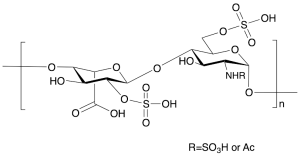
Heparan Sulfate (Technical Grade)
$177.68 Add to cart View Product DetailsMolecular Formula : No Data Available
-

Heptachlor
$192.34 Add to cart View Product DetailsMolecular Formula : C10 H5 Cl7
-

Heptachlorodibenzo-p-dioxin
$224.25 Add to cart View Product DetailsMolecular Formula : C12 H Cl7 O2
-

Heptadecanoyl L-carnitine-d3 HCl
$120.75 Add to cart View Product DetailsMolecular Formula : C24 D3 H45 N O4 . Cl
-
Heptahelicene
$132.83 Add to cart View Product DetailsMolecular Formula : C30 H18
-

Heroin Hydrochloride
$94.01 Add to cart View Product DetailsMolecular Formula : C21 H23 N O5 . Cl H
-

Heroin-d9
$166.46 Add to cart View Product DetailsMolecular Formula : C21 2H9 H14 N O5
-
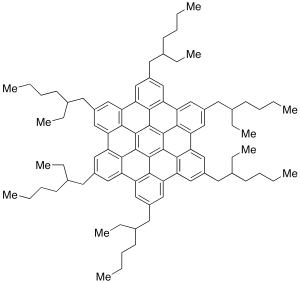
Hexa-(2-ethylhexyl)-hexa-peri-hexabenzocoronene
$440.74 Add to cart View Product DetailsMolecular Formula : C90 H114
-

Hexachlorobenzene-13C6
$153.53 Add to cart View Product DetailsMolecular Formula : 13C6 Cl6
-

Hexacosanoic Acid ((1S,2S,3R)-2,3-Dihydroxy-1-hydroxymethyl-heptadecyl)-amide
$83.66 Add to cart View Product DetailsMolecular Formula : C44 H89 N O4
-
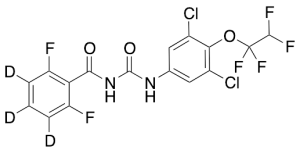
Hexaflumuron-D3
$331.20 Add to cart View Product DetailsMolecular Formula : C16H5D3Cl2F6N2O3
-

Hexahydrocurcumin-d6
$241.50 Add to cart View Product DetailsMolecular Formula : C21H20D6O6
-

Hexamidine-d12 Dihydrochloride
$213.04 Add to cart View Product DetailsMolecular Formula : C20 D12 H14 N4 O2
-
Hexanoic-5,5-d2 Acid
$62.10 Add to cart View Product DetailsMolecular Formula : No Data Available
-

Hexanoyl Glycine-13C2,15N
$214.76 Add to cart View Product DetailsMolecular Formula : C613C2H1515NO3
-

Hexanoyl-d3-L-carnitine Chloride
$185.44 Add to cart View Product DetailsMolecular Formula : C13 D3 H23 N O4 . Cl
-

Hexanoyl-L-carnitine-(N-methyl-d3) Chloride
$188.03 Add to cart View Product DetailsMolecular Formula : C13H23D3ClNO4
-

Hexazinone-d6 (dimethyl-d6-amino)
$85.39 Add to cart View Product DetailsMolecular Formula : C12 2H6 H14 N4 O2
-
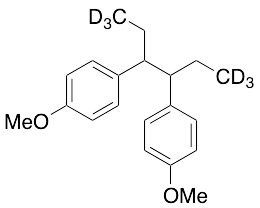
Hexestrol Dimethyl Ether-d6
$166.46 Add to cart View Product DetailsMolecular Formula : C20 D6 H20 O2
-
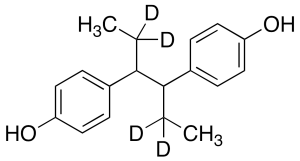
Hexestrol-d4
$234.60 Add to cart View Product DetailsMolecular Formula : C18 2H4 H18 O2
-
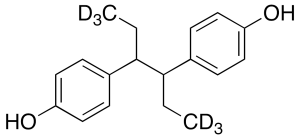
Hexestrol-d6
$227.70 Add to cart View Product DetailsMolecular Formula : C18 2H6 H16 O2
-
Hexythiazox-d11
$203.55 Add to cart View Product DetailsMolecular Formula : C17 D11 H10 Cl N2 O2 S
-

HGF, Human
$2,307.19 Add to cart View Product DetailsHepatocyte Growth Factor (HGF),also known as hepatopoietin-A and scatter factor, is a pleiotropic mitogen belonging to the peptidase S1 family (plasminogen subfamily). It is produced by mesenchymal cells and acts on epithelial cells, endothelial cells and haemopoietic progenitor cells. HGF binds to the proto-oncogenic c-Met receptor to activate a tyrosine kinase signaling cascade. It regulates cell growth, motility and morphogenesis, thus it plays a pivotal role in angiogenesis, tumorogenesis and tissue regeneration.
-
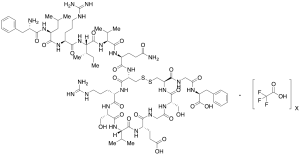
HGH Fragment 176-191
$84.53 Add to cart View Product DetailsMolecular Formula : C78H123N23O22S2 • x(C2HF3O2)
-

Hippuric Acid-13C6
$268.24 Add to cart View Product DetailsMolecular Formula : C313C6H9NO3
-

Histamine-Alpha,Alpha,Beta,Beta-d4 Dihydrochloride
$200.96 Add to cart View Product DetailsMolecular Formula : C5 2H4 H5 N3 . 2 Cl H
-
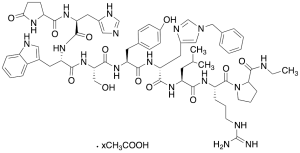
Histrelin Acetic Acid Salt
$183.71 Add to cart View Product DetailsMolecular Formula : C66H86N18O12 • xCH3COOH






